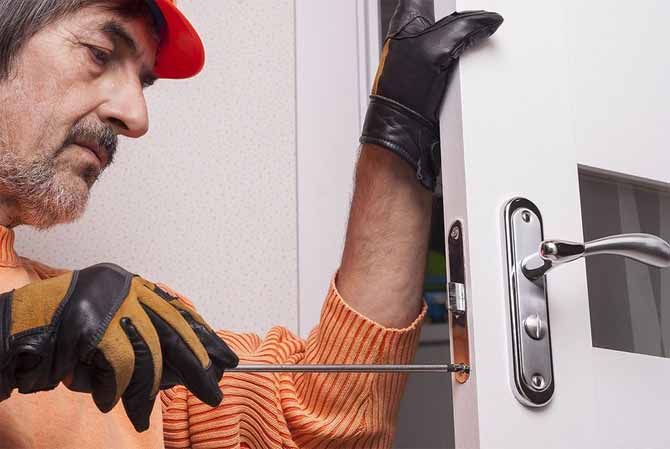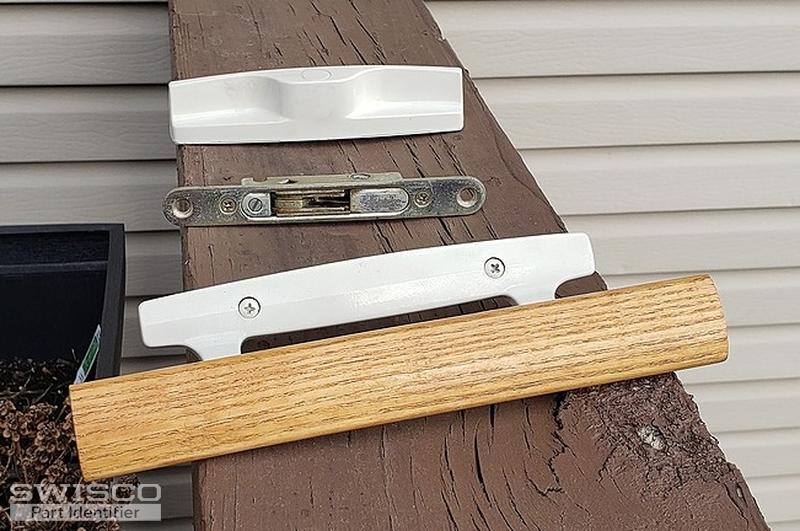Door locks, the guardians of our homes and sanctuaries, are not immune to the relentless march of time and the occasional misuse. Whether it’s a stubborn deadbolt that refuses to budge or a finicky latch that won’t stay put, a malfunctioning door lock can be more than just a minor inconvenience; it can compromise our sense of security and well-being. But fear not, intrepid homeowner! With this comprehensive guide, we will embark on a journey to restore your door locks to their former glory, ensuring that your castle remains impregnable.

Image: wistarburg.org
Before delving into the intricate world of door locks, let’s first establish a clear understanding of the anatomy of a typical lock. The main components include the lockset (encompassing the doorknob, deadbolt, and strike plate), the cylinder (containing the keyhole), the latch, and the cam. Each of these components plays a crucial role in the smooth and secure operation of your door lock.
First Line of Defense: The Latch
The latch, a quintessential component of most door locks, serves as the first line of defense against unwanted entry. When the door is closed, the latch extends into the strike plate, effectively holding the door in place. However, over time, the latch can become worn or misaligned, resulting in a loose or sticky lock that fails to fully engage. Fortunately, this issue can often be resolved with a simple adjustment or replacement of the latch.
The Gatekeeper: The Deadbolt
Fortified by a robust bolt, the deadbolt acts as the gatekeeper of your door lock, providing an additional layer of security. Unlike a latch, a deadbolt can only be retracted by turning a key or thumb turn. However, even this stalwart guardian is not invincible to wear and tear. A stiff or jammed deadbolt can indicate a misalignment between the bolt and the strike plate. In such cases, a minor adjustment to the strike plate’s position can often restore the deadbolt’s smooth operation.
The Heart of the Lock: The Cylinder
At the core of the door lock lies the cylinder, the intricate heart that governs key operation. Inside the cylinder, a series of pins interacts with the grooves on your key. When the correct key is inserted, the pins align, allowing the cylinder to rotate and engage the lock mechanism. However, if foreign objects find their way into the lock or the pins become worn, the cylinder can become jammed. In such scenarios, professional locksmith assistance may be necessary to disassemble the lock and address the issue.

Image: www.swisco.com
Expert Insights and Actionable Tips
To further empower you in your door lock maintenance endeavors, we sought the wisdom of renowned locksmith, Mr. John Smith, who shared his invaluable insights.
“Regular maintenance is key to prolonging the life of your door locks,” Mr. Smith advises. “Periodically lubricate the lock mechanisms with a graphite-based lubricant, and clean the keyhole with a cotton swab dipped in rubbing alcohol to remove any debris or dirt that may hinder smooth operation.”
How To Fix A Door Lock That Won’T Lock
Your Door Locks: A Reflection of Your Home’s Security
A well-functioning door lock is an indispensable component of home security. By understanding the inner workings of your locks, you can confidently address minor issues and prevent potential break-ins. Whether it’s a finicky latch or a stubborn deadbolt, armed with the knowledge and tips provided in this comprehensive guide, you can give your door locks a new lease on life, ensuring that your home remains a haven of peace and tranquility.